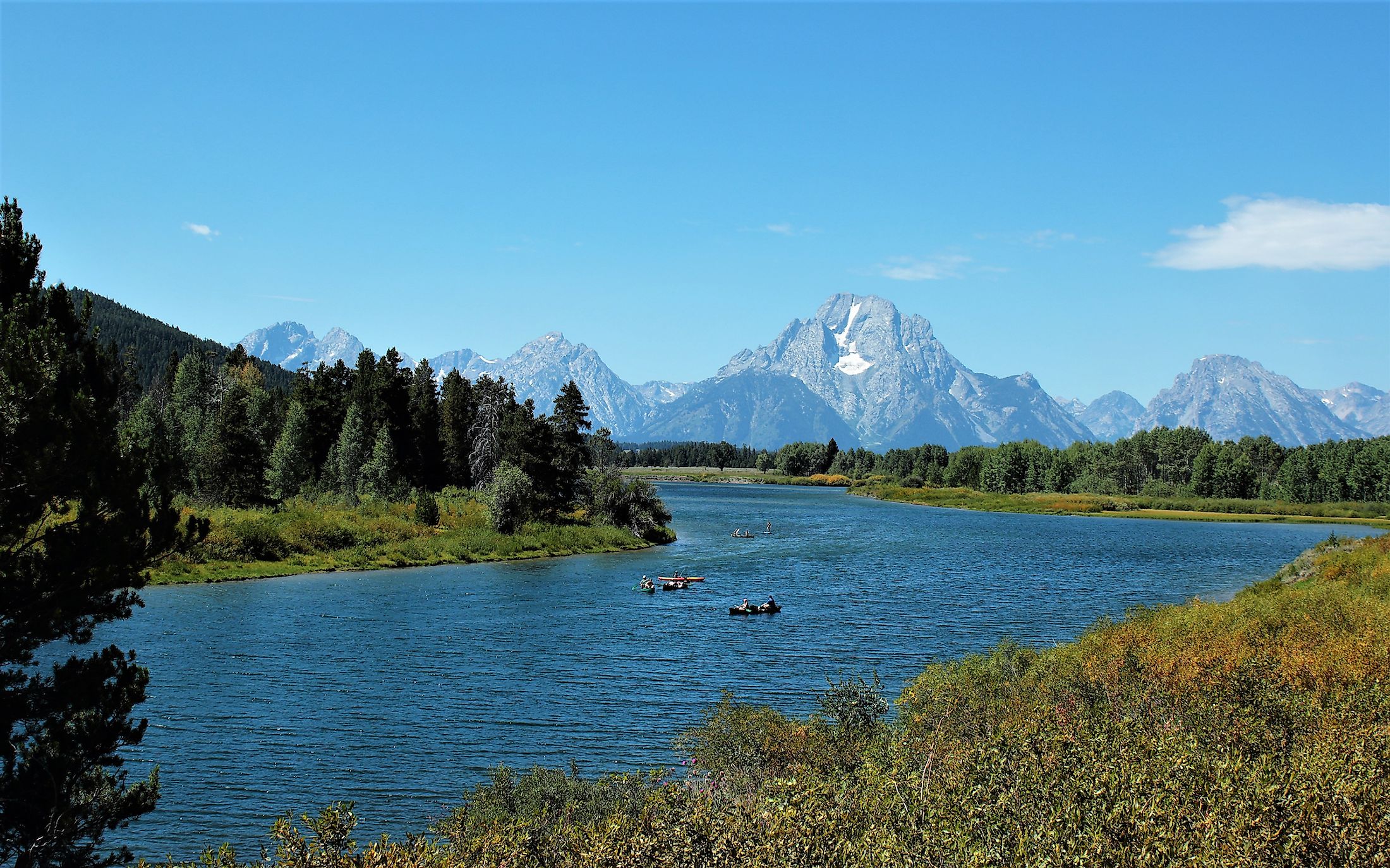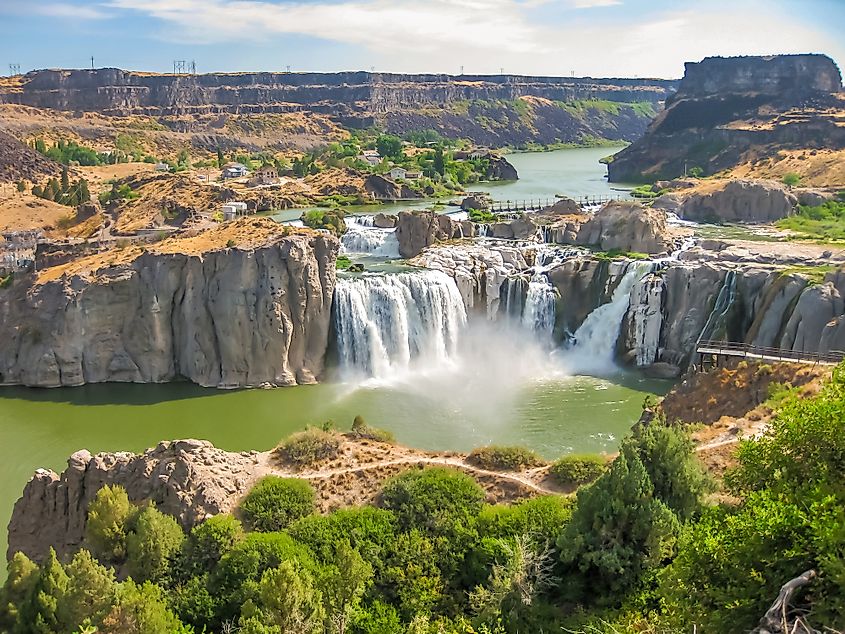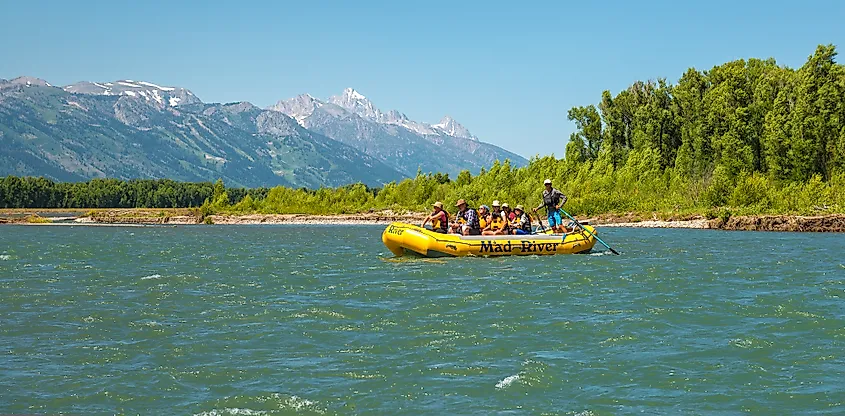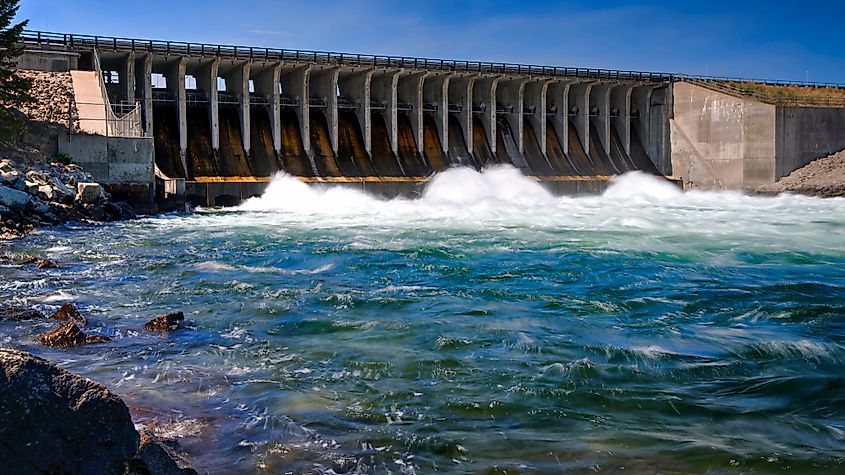
Snake River
Deriving its name from its serpentine course, Snake River serves as the Columbia River's largest tributary. With a length of over 1,000 miles, the river drains Wyoming, Washington, and Idaho. Despite its serpentine shape, Snake River derives its name from the misinterpretation of a hand symbol used to mark the Shoshone tribe's territory. Instead of symbolizing a snake's motion, the river is actually meant to represent the motion of the salmon that dwelled in the river.
Course Of The Snake River

Considered one of the Pacific Northwest's great rivers, the Snake River originates near the mountains of the Continental Divide within northwest Wyoming. The river's course then flows into Jackson Lake within Grand Teton National Park, followed by Jackson Hole in the South. After exiting Wyoming through the Snake River Canyon, the river enters the US state of Idaho through the Palisades Reservoir. Passing through Idaho's Swan Valley, the city of Idaho Falls, the river is then impounded by the American Falls Dam. Moving further downriver, Snake River's course takes it to Massacre Rocks State Park, which lies on the Oregon Trail's old path. Then, after passing through Milner Dam and its reservoir, the river proceeds to flow into Idaho's Snake River Canyon under Perrine Bridge and over Shoshone Falls. Although part of the Columbia Plateau province's physiographic section, portions of the river's basin fall within the Basin and Range province.
The river enters the lower portion of its course as it leaves the Snake River Canyon, whereby the Malad River and Bruneau River serve as tributaries that deliver more water into the Snake River. The river then flows toward Boise as well as the Idaho-Oregon border. Further down its course, Snake River enters Hells Canyon, whereby it is impounded by three dams: the Oxbow Dam, Brownlee Dam, and Hells Canyon Dam. Hells Canyon Wilderness is itself the deepest river gorge in all of North America. At elevations of 5,000 feet, Snake River's landscape consists of high desert and semi-desert. Leaving Hells Canyon, the river flows alongside the cities of Clarkston, Washington, and Lewiston, Idaho. Before reaching its final destination and emptying into Washington State's Columbia River, the river is further impounded by four large dams: Little Goose Lock and Dam, Lower Granite Lock and Dam, Ice Harbor Lock and Dam, and Lower Monumental Lock and Dam. As such, Snake River serves as Columbia River's largest tributary, given its mean discharge of 56,900 cubic feet per second, making it one of the Pacific Northwest region's most important rivers.
Origin Of Snake River's Name

Despite its name, Snake River is actually not named after any snakes it may contain. Moreover, the river does not get its name from the serpentine course it follows between Yellowstone National Park and the Columbia River. Thus, it is not the many twists and winds that have given the river its name. Instead, Snake River derives its name from the Shoshone, a Native American tribe who dwelled along the river's shoreline in southeastern Idaho. To mark their territory, the Shoshone tribe made use of sticks that gave off an image of a snake. Moreover, to mimic the river's swimming salmon and identify one another, the Shoshone made an S-shaped signal with their hands.
As such, the Shoshone identified themselves as "the people who live near the river with many fish." According to common belief, early White explorers mistook this hand-motion as that of a snake, which thereby led them to name the river "Snake River." Yet, the river's name has had several variants throughout the years. The most prominent of these name variants include Lewis Fork, Great Snake River, Saptin River, Shoshone River, Mad River, and Yam-pah-pa. In 1912, the United States Geographic Board officially named the river "Snake River."
Brief History Of The Snake River
People have inhabited the areas surrounding the Snake River as far back as 11,000 years ago. Early cultures relied upon a variety of food sourcing techniques to survive. These included broad-spectrum foraging initially, which was then replaced by semisedentary foraging, whereby they had a significant reliance on the river's fish species, particularly salmon. Upon introducing horses into the areas around the Snake River in approximately 1700, the Shoshone and other "Plateau" culture tribes became further established. This also led to a shift in food sourcing. These people became equestrian foragers who often spent considerable periods of time hunting larger animals such as bison instead of sticking only to their local foraging ranges.
The first major US expedition to explore the Snake River's lower portions was the Lewis and Clarke Expedition of 1804-1806. Subsequent expeditions such as the Astor Expedition of 1810-1812, the John C. Frémont mission of 1832, and the Benjamin Bonneville Expedition of 1833-1834 succeeded in exploring much of the Snake River's remaining lengths. The Oregon Trail, which follows much of the river, was later established around the middle of the nineteenth century.
Threats To The Snake River
Throughout the years, Snake River has come increasingly under threat. To start off, nitrogen and phosphorus-rich fertilizers are applied to crops within the surrounding region, which then gets carried into the river through rainwater. This, in turn, leads to a decrease in the river's overall oxygen concentration, as microorganisms such as algae increase in number due to the nutrients and use up more of the river's oxygen. Given the lowered oxygen content, the river ecosystem as a whole suffers.

Another significant threat to the Snake River ecosystem's health is the dams that have been built along the river. Although the four dams along the river generate renewable electricity for communities in the vicinity, they significantly restrict the river's water flow. These severely impact fish populations such as the endemic Chinook salmon population, as the fish cannot migrate easily to their spawning habitats upstream. Moreover, as water begins to pool behind the dams, the water temperature increases, which can heavily affect the fish populations' health. The lowered population of salmon causes a ripple effect, as different species, such as orcas, depend on the salmon since they form a core component of their diet. Other critical issues threatening the Snake River's ecosystem are irrigation diversions, levees, noxious weed invasion, and increased recreational use.











